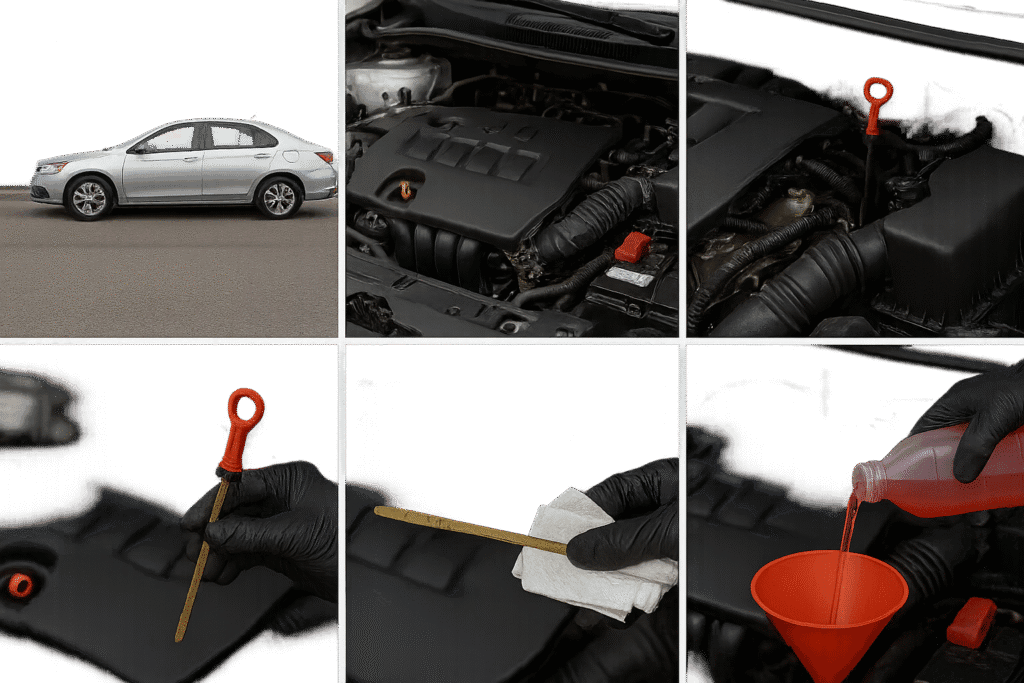Transmission fluid is the lifeblood of your vehicle’s gearbox. It keeps gears lubricated, cool, and running smoothly. Checking it regularly can prevent costly repairs. This step-by-step guide is written for U.S. drivers, complete with size references and visuals.
What You’ll Need
- Clean, lint-free rag or paper towel
- Vehicle owner’s manual
- Funnel (if topping off)
- Transmission fluid (type and amount specified in your manual)
Step 1: Park Safely
- Park on a flat, level surface.
- Set the parking brake.
- For most automatic transmissions, the engine should be running and the car in Park (P) or Neutral (N).
- For most manual transmissions, checking fluid often requires getting under the vehicle — follow your manual.
Step 2: Locate the Dipstick
- Open the hood.
- Look for the transmission dipstick — usually labeled and often with a red, yellow, or orange handle.
- In many U.S. vehicles, it’s toward the back of the engine bay.
➡ Size Note: Dipstick handles are typically about 1–2 inches wide and stick up a few inches above engine components.
Step 3: Remove and Clean the Dipstick
- Pull the dipstick out completely.
- Wipe it clean with a rag or paper towel.
Step 4: Check the Fluid Level
- Reinsert the dipstick fully, then pull it out again.
- Look at the markings — usually labeled “Full” and “Add” or with cross-hatch areas.
- Fluid should be between these marks.
Step 5: Inspect Fluid Condition
- Color: Healthy fluid is pinkish-red.
- Smell: Should be slightly sweet; burnt smell means trouble.
- Texture: Should be smooth, not gritty.
➡ Tip: If it’s dark brown/black or smells burnt, schedule a transmission service.
Step 6: Add Fluid if Needed
- Use a funnel to add the correct type of transmission fluid.
- Add in small amounts, rechecking often — overfilling can damage the transmission.
➡ Size Reference: Many U.S. vehicles require about 0.5–1 quart to top off if low.

Extra Tips
- Some modern cars don’t have a dipstick — fluid checks require a mechanic.
- Always follow your vehicle’s maintenance schedule.
- Check fluid every 30,000–60,000 miles, or as your manual recommends.
Final Thoughts
Checking your transmission fluid takes just a few minutes but can save thousands in repairs. With these U.S.-specific tips, size references, and visuals, you’ll keep your vehicle running smoothly and confidently.

